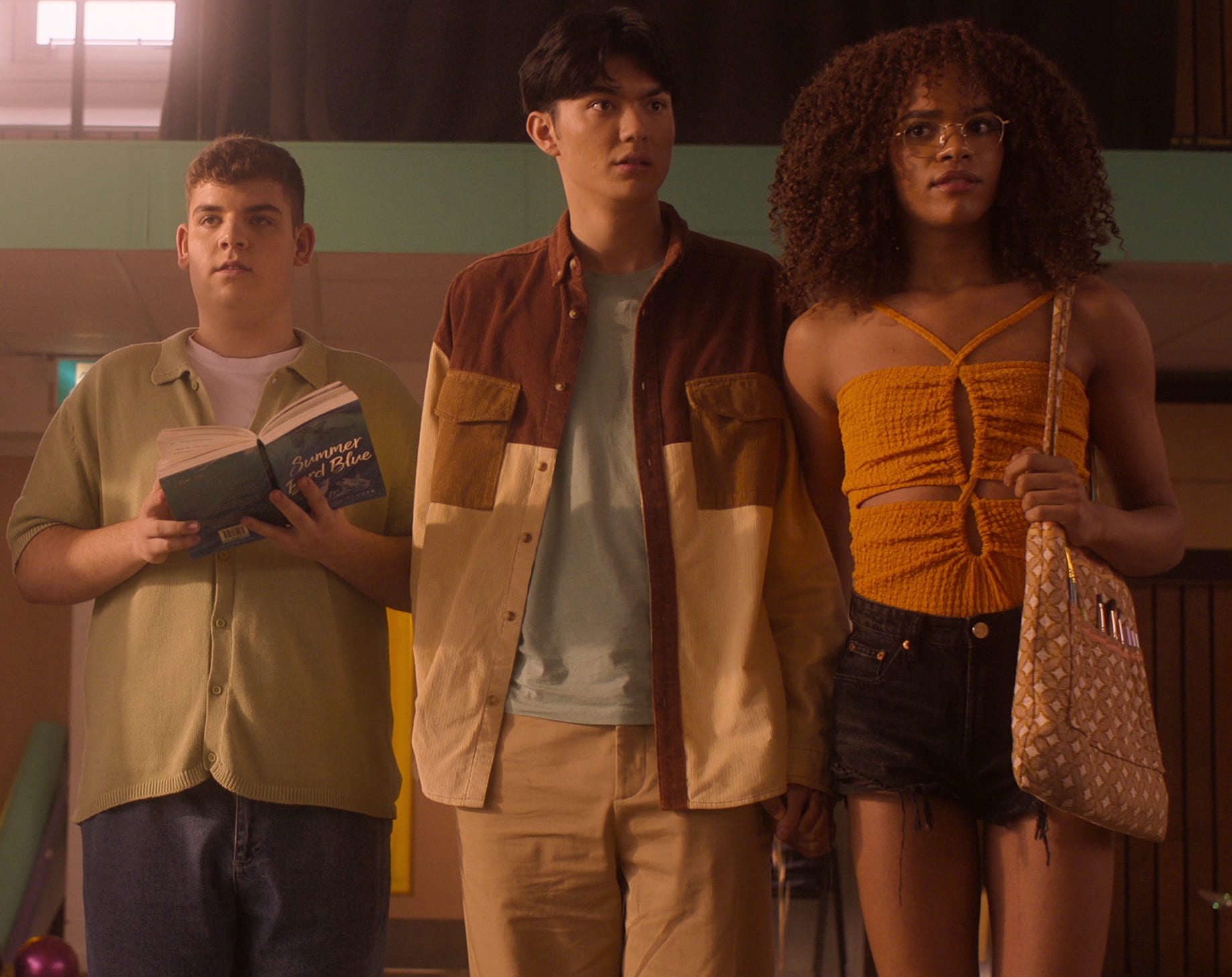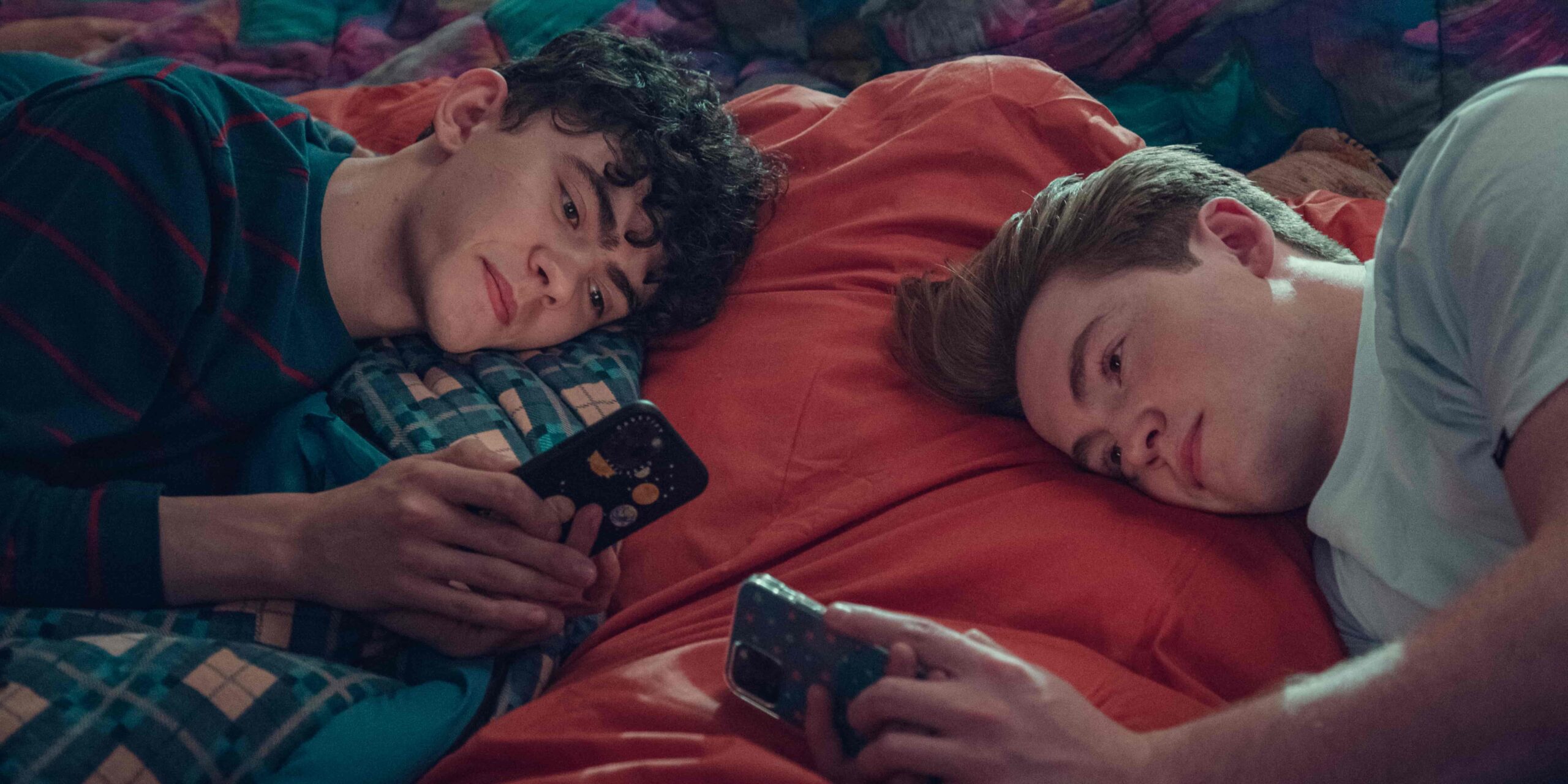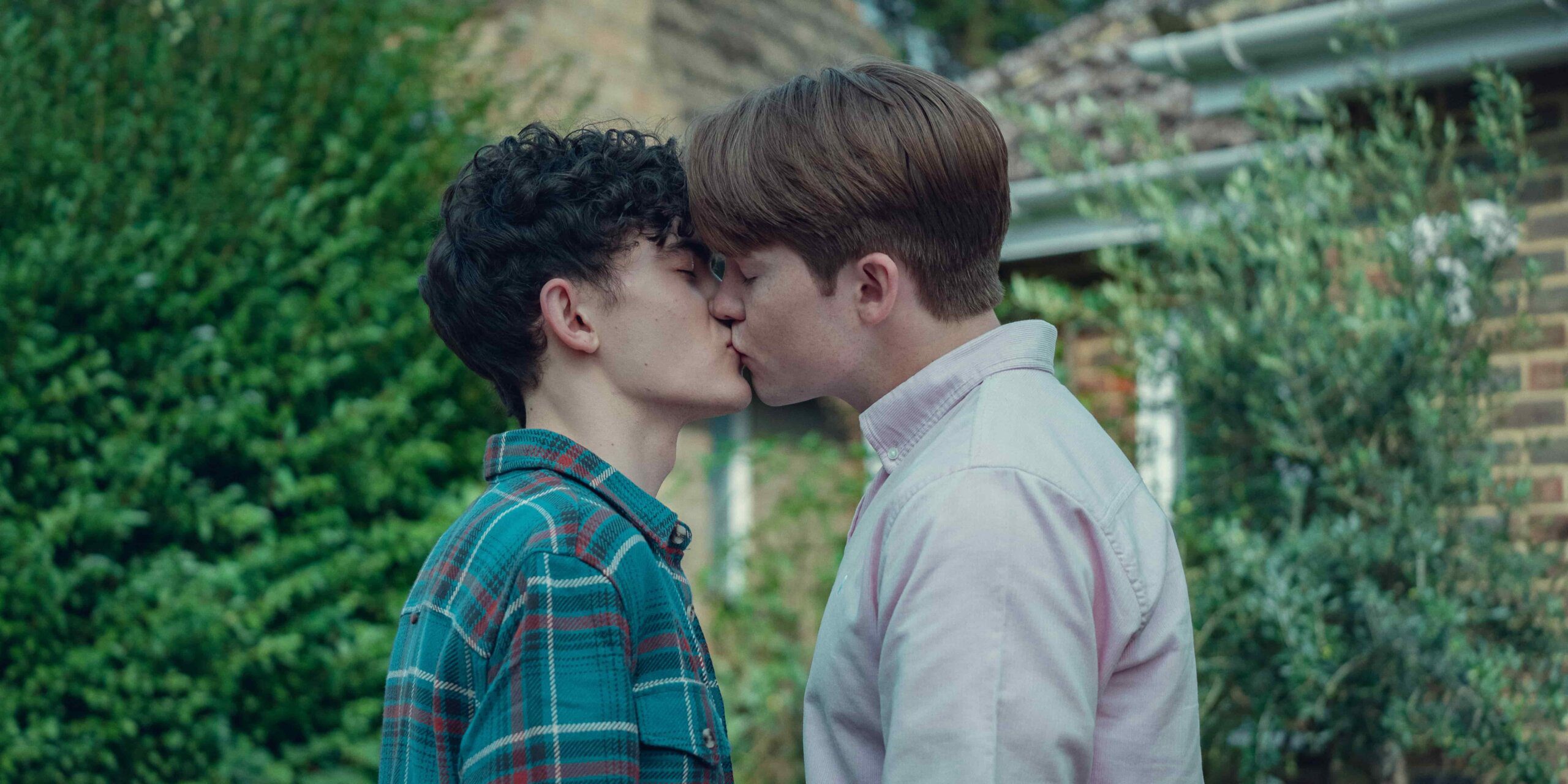One of last year’s most surprising hits was Heartstopper, a British teen series based on a series of graphic novels by Alice Oseman (who also writes the TV show). The eight-episode first season instantly won audiences over for being what just may be the sweetest, loveliest show in existence. Heartstopper often feels like a much-needed tonic, offering a far more laid-back, lived-in approach than typical teen shows. But what’s really special about Heartstopper is its spectacular queerness: myriad sexual and gender identities in the show are depicted authentically. It’s the kind of show that I, and many other queer people, wish we had growing up. And while watching Heartstopper more than a decade after finishing high school may make me feel tremendously old, its radiant charm and heartwarming representations of queer love are unmissable.
There’s a lot going on in the second season of Heartstopper, which drops August 3 on Netflix (I won’t give too much away). At the end of the first season, the long-awaited relationship between adorable, out Charlie (Joe Locke) and closeted bisexual rugby lad Nick (Kit Connor) was made official. Their relationship forms the crux of Season 2, though this time around the couple deals with Nick coming out, proudly pronouncing his relationship with Charlie to the world. That’s easier said than done, of course, and something Heartstopper really nails is just how difficult it can be to come out. Though everyone is supportive of Charlie, that doesn’t necessarily mean they’ll feel the same way about Nick. Connor does a tremendous job channelling Nick’s anxiety, and that anxiousness is amplified by how badly he wants to make Charlie happy.
While the first season largely centred on Nick and Charlie, the second season spends a lot of time with the supporting characters. There’s overprotective Tao (William Gao) and trans artist Elle (Yasmin Finney), whose will-they-won’t-they relationship reaches new heights this season, as the pair grapple with their feelings for one another. We get plenty more of Tara (Corinna Brown) and Darcy (Kizzy Edgell), the lesbian couple who are now a firm part of the friend group. Even bubbly Imogen (Rhea Norwood) gets time to explore what her life will be like now that she isn’t crushing on Nick. And shy, quiet Isaac (Tobie Donovan), one of the most intriguing characters from the first season, rarely seen without a book in his hand, finally gets a plot of his own.

Isaac (Tobie Donovan), Tao (William Gao) and Elle (Yasmin Finney) also return in Season 2. Credit: Netflix
Contemporary teen shows often grapple with the fantastical and outrageous: consider Yellowjackets (surviving the wilderness), Euphoria (every drug under the sun) and Outer Banks (searching for treasure), for example. In comparison, it’s refreshing to see characters in Heartstopper deal with hot-button teenage issues like doing your homework and passing exams. That’s not to say that Heartstopper is boring—far from it. It’s genuinely lovely to see a show dedicate itself to moments that just about anyone watching can relate to. Lots of shows are about teens, but Heartstopper feels like it’s for teens.
Season 2 feels most timely when looking at what these young people’s lives might look like once they move beyond school. A lovely three-episode arc finds the gang on a trip to Paris, where their friendships and romances evolve past their suburban trappings. It’s Heartstopper at its very best; whimsical, colourful and irresistibly sweet. Also wonderful is Elle’s arc, which finds her exploring a potential new direction—an art college that celebrates queer students. Seeing Elle, after facing so much hardship in her past, thrive with other openly trans students is incredibly touching, and Finney is particularly excellent in these scenes.
Heartstopper excels in how well it captures being a teenager, particularly in a world dominated by screens and social media. In one moment, Charlie and Nick, lying next to each other at a sleepover, text each other instead of just speaking. It’s a moment that might seem absurd to older audiences—but for kids Nick and Charlie’s age, it’s tender and romantic, rooted in lived experience. Technology is an essential part of the fabric of these characters’ lives that never feels judgmental; instead, Heartstopper cleverly highlights how social media brings young people together, while also driving their anxieties. This is beautifully explored through Charlie’s character, who finally has everything he’s wanted in his relationship with Nick, but is tormented by a past full of bullying and homophobia that has burrowed into the back of his mind. As such, there’s flittering tension each time he receives a notification.

Credit: Netflix
This is a show that delicately balances the complex realities faced by LGBTQ+ youth while offering a euphoric and at times utopic look at what being queer can be like. Historically, stories about queer people are drenched in tragedy, but newer shows like Schitt’s Creek offer a look at life where things like homophobia don’t even exist. Heartstopper finds a happy medium. It would be bizarre if a show about teens figuring out who they are didn’t show the realities of how difficult that discovery can be. But Heartstopper is careful to never let homophobia define its characters. Yes, Charlie has been deeply impacted by the rampant mistreatment he faced for being gay, and those effects are dealt with sensitively and intelligently this season. But Charlie is seen thriving far more than not. It’s a challenging dichotomy to pull off, but the show manages it effectively, showing youth that despite the challenges they may face, life is undeniably richer when you can live authentically and on your own terms.
In eight 30-minute episodes, the season breezes by in a largely delightful fashion. Sometimes, however, Heartstopper suffers under the weight of trying to do too much with too many characters. That’s especially evident in a subplot that feels totally out of place involving two teachers, Mr. Farouk (Nima Taleghani) and Mr. Ajayi (Fisayo Akinade). It feels more like a desire to bring more adult audiences into Heartstopper, but the story never really goes anywhere, and the season already feels stretched. I can’t imagine anyone in the show’s target audience finding themselves invested in their journey, especially since it is so underdeveloped. The show threatens to stretch itself too thin, but when it works—which is most of the time—it’s probably the best show for teens. There’s not a warmer hug of a television series than Heartstopper.


 Why you can trust Xtra
Why you can trust Xtra


